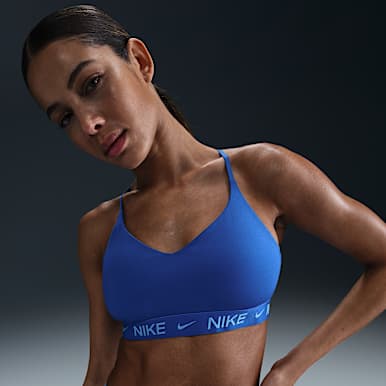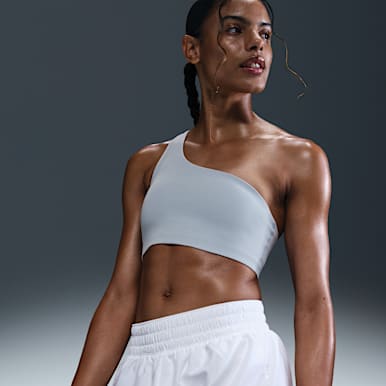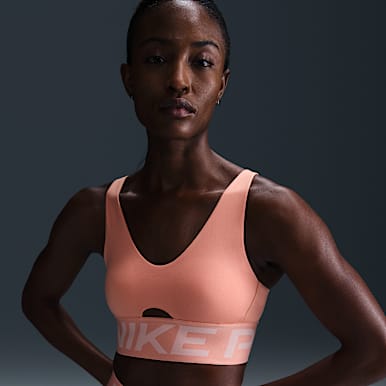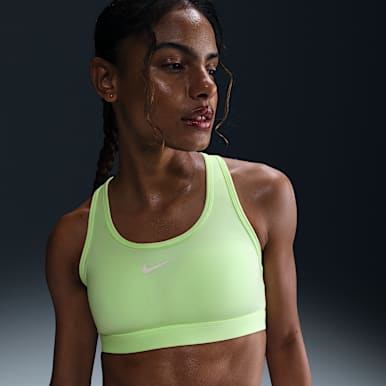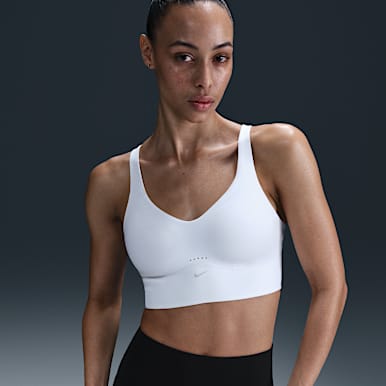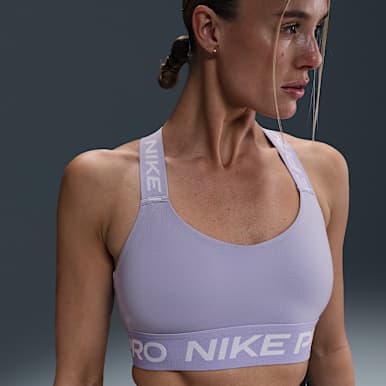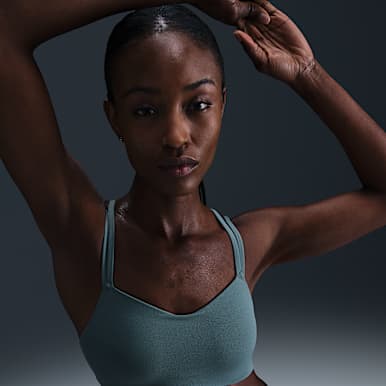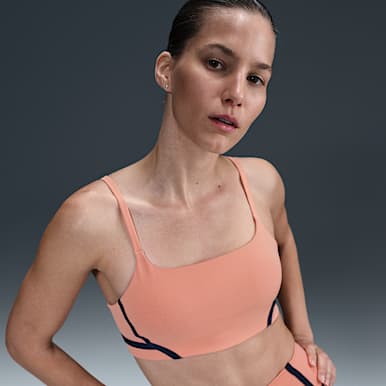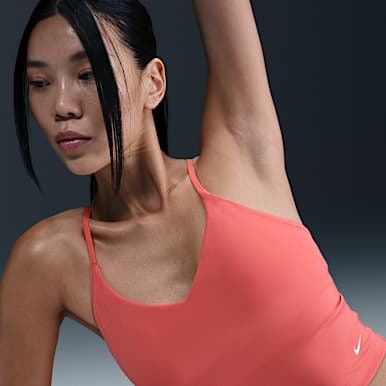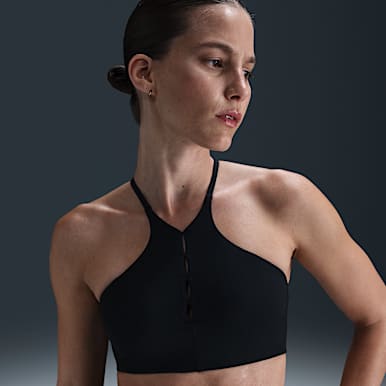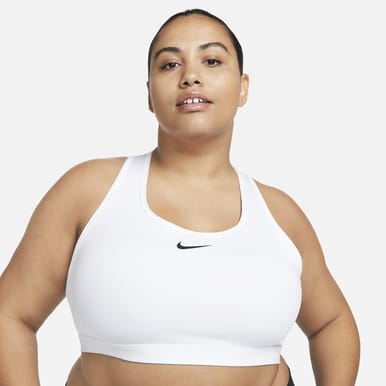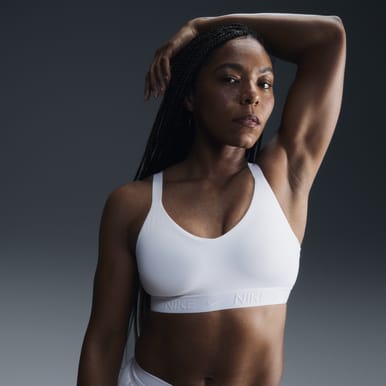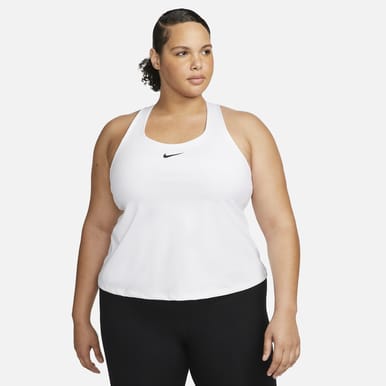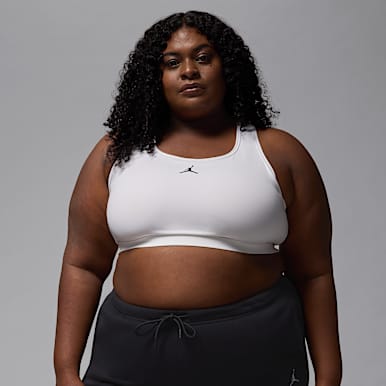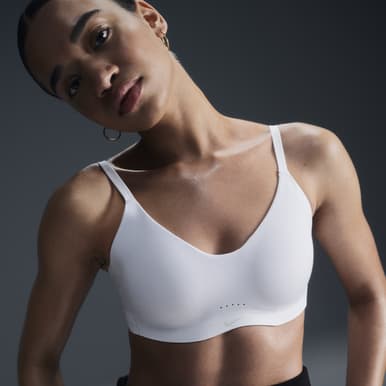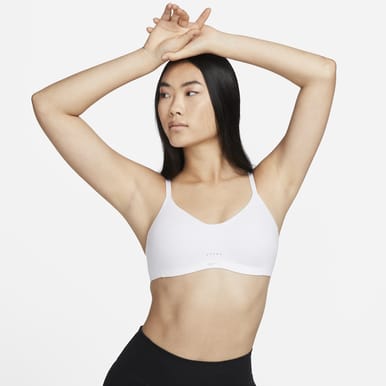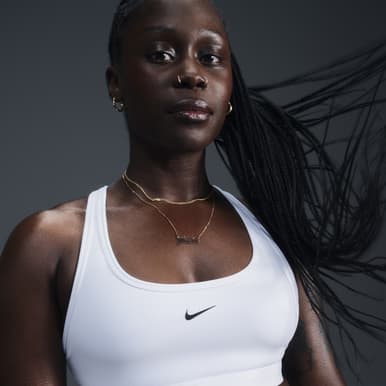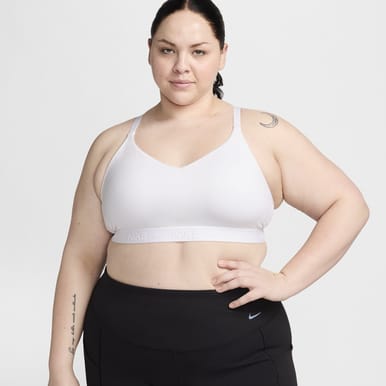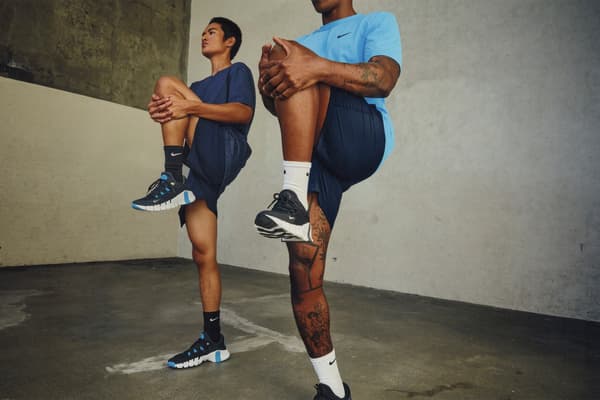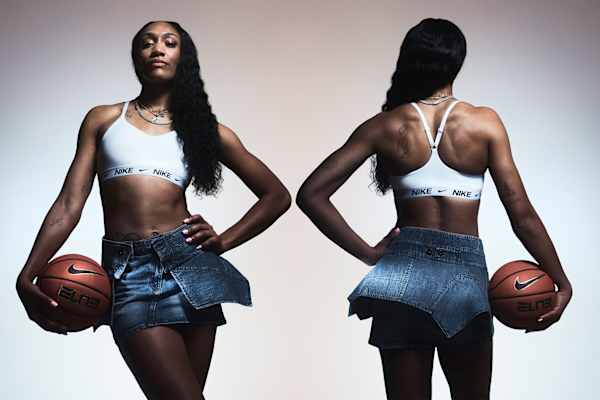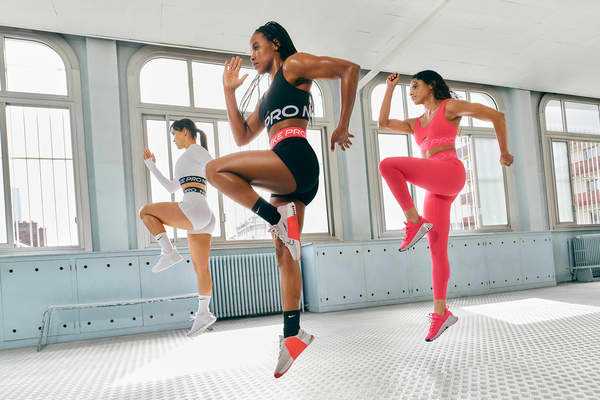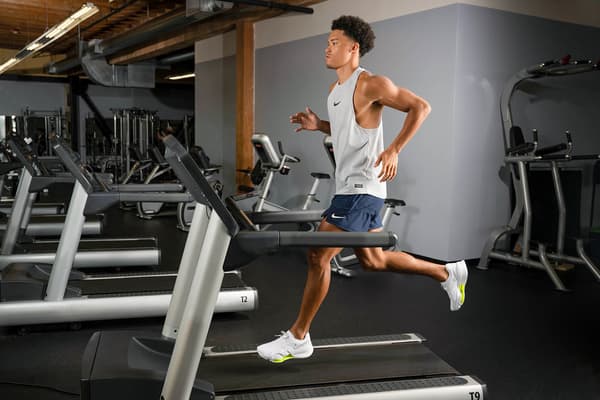How To Choose the Right Sports Bra
Buying Guide
Nike sports bras serve a wide range of athlete needs. Check out the top picks.

A comfortable and supportive sports bra can make all the difference in your training, and knowing how to choose a sports bra is key to finding the right fit in the style that works for your workout.
There is a dizzying array of sports bras in the world made with varying features to account for exertion levels and preferred feel. Nike offers a few different sports bra silhouettes:
- For an athlete with a here-to-win mentality, the Nike Swoosh bra is the top pick. Its maximum coverage supports every move.
- For a minimal-coverage bra, opt for the Nike Indy, a sleek but supportive choice that offers plenty of freedom to flex—and to flatter.
- If you’re seeking all-day comfort, try the ultra-soft, smooth Nike Alate, which feels like a second skin.
Remember that the right sports bra has a snug fit while allowing for flexible movement. A sports bra that doesn’t fit well may chafe, not keep you in place, or feel restrictive around your rib cage.
Use this guide for tips on how to choose a sports bra.
Align the Activity With the Impact
The Nike Swoosh, Indy and Alate all come in three support levels. Keep the following information in mind when deciding the right support level for your needs, which may vary based on your workout.
High-support sports bras
High-impact exercises such as running or jumping involve bouncing and bigger movements. Such exercise requires a high-impact sports bra, which is designed to support and contain your breasts to limit the amount of movement. By limiting breast pain and possible distractions, high-support sports bras are perfect for tennis, basketball and HIIT.
Nike Dri-FIT high-support sports bras have wide straps, secure back clasps and supportive cups. This focus on support helps to prevent chafing and digging in.
If you have larger breasts, you may want to choose medium- or high-support sports bras, even for low-impact exercise. The extra support offers compression and coverage so you feel comfortable and supported during exercise.
Medium-support sports bras
For lighter-impact exercise, opt for a medium-support sports bra. Lighter-impact exercise may include cycling, boxing or rowing. These types of exercise still require multidirectional support and compression, but less so than what is offered by high-support sports bras.
Nike Dri-FIT medium-support sports bras are made from soft, smooth fabric with enough support to keep everything in place. This type of bra is ideal for smaller cup sizes, though those with larger chests may prefer wearing a medium-support sports bra for low-impact exercise for the extra support.
Light-support sports bras
Low-impact exercises like Pilates, yoga, or lifting involve less movement and less direct force on the body. For this reason, a light support sports bra is suitable.
Nike Dri-FIT light-support sports bras are lightweight, comfortable and appropriate for everyday wear, even if you're not working out. The soft, breathable fabric stretches to move with you.
Find the Right Bra Size For You
Getting the right sports bra fit is critical to your comfort. Learn more about how to measure your bra size.
